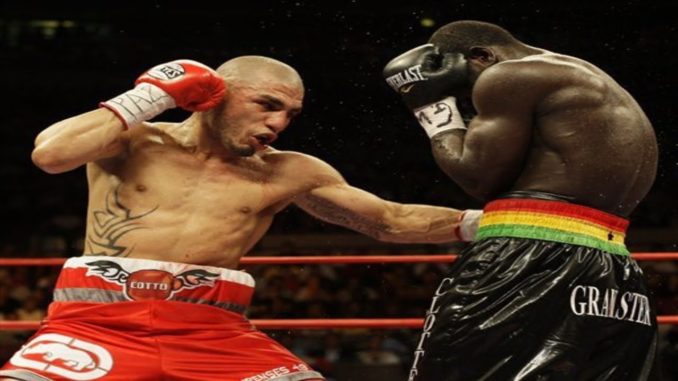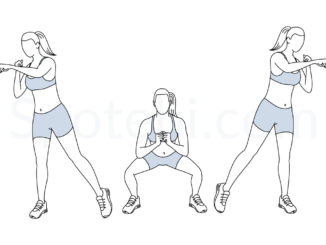
Another in our series of boxing how to guides on body punching, this one examining the right hook (or back hand hook) to the body.
Knowing how to throw a right hook to the body enables you to deliver massive power to a very specific and precise location; the soft tissue below the ribs on the left side of the opponent’s body. It is worth understanding that you are not aiming for the ribs. The rib cage is by design a tough structure. For maximum impact it’s far better to take the path of least resistance and strike the soft tissue.
In general, and depending upon your position in relation to your opponent, this body punch is designed to hit the spot behind the guarding arm of the opponent. Precision is great, but raw power and aggression is the trick to knowing how to get the most from this crushing body punch.
Before we get onto the mechanics of how to throw the right hook to the body, you need to be aware that this is not a right uppercut. I’m sure plenty will decide that this is an uppercut, but really it is not. There is a subtle difference between a short range hook and a short range uppercut, with the uppercut to the body striking home in the center of mass. Understand this difference and it will have a positive impact on your body punching skills.
Boxing How to Guide – The Mechanics
- From the boxing stance, bend your knees in order to lower your centre of gravity. This is quite simply a duck, which aside from being a defensive action also acts as a precursor to a body strike.
- As the duck is taking place, generate an explosive thrust by pushing from the ball of your back foot. This thrust provides the energy to deliver massive rotation of the upper body (counter-clockwise from the orthodox stance).
- The bend of your front leg (from the duck) enables the necessary amount of hip rotation. Without the bend, your hips will complete maybe only 25% of the rotation necessary to give the punch the required power on impact.
- During the rotation, release your back hand in an arc at an angle of 45 degrees to the ground. Ensure that the punch accelerates towards the target to add to the massive leverage produced during the rotation; this is how you will maximize the power.
- Return your arm and body to the starting position as per the boxing stance.
Boxing How to Guide – Common Faults
- Be aware of your range. Be sure that if you use this punch at a longer range the opponent is vulnerable to it. In short, the further you are away from the opponent when using this shot, the greater the risk of you taking a punch before yours lands. Reduce the risk of a long range ‘bombing’ with this punch by stepping in with a jab ahead of letting loose with the hook to the body.
- Make the punch direct. Don’t allow it to loop too low as this leaves a big opening for your opponent to exploit (see previous fault).
- As always, make sure that your body weight does not propel forward, resulting in your body weight being over your front leg. The golden rule is never let your nose travel past the line of your front knee. If you do, then you are off-balance and you are adding power to your opponent’s punches.
And there it is, the MyBoxingCoach boxing how to guide on landing the right hook to the body. This is a true fight-ending punch, targeting as it does the spleen and other vital organs. Make a mental note of how you want the impact of the shot to travel through as much of the body as possible, that is why landing the punch at an angle of 45 degrees is a big, big plus. Master this shot and it will slip seamlessly into your ‘body and head’ combinations to deadly effect.
Proudly WWW.PONIREVO.COM
by Fran Sands



